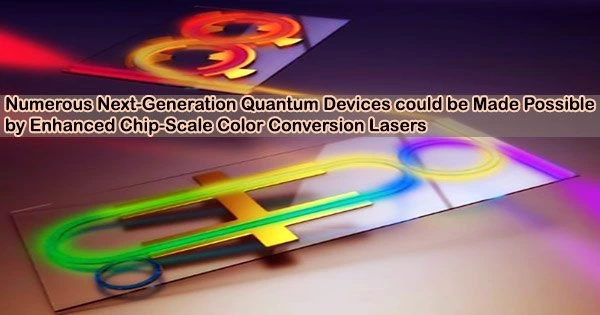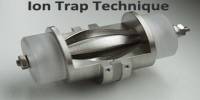Researchers at the National Institute of Standards and Technology (NIST) have significantly increased the effectiveness and power output of a number of chip-scale devices that produce laser light at various hues while using the same input laser source. This improvement has been made in two new studies.
Future quantum computers and compact optical atomic clocks are just two examples of the many quantum technologies that will need simultaneous access to numerous, greatly different laser colors in a constrained area of space.
For example, all the processes necessary for a cutting-edge atom-based architecture for quantum computation, including setting up the atoms, cooling them, reading out their energy states, and carrying out quantum logic operations, require up to six different laser colors.
To create multiple laser colors on one chip, NIST researcher Kartik Srinivasan and his colleagues have spent the last few years studying nonlinear optical devices, such as those made of silicon nitride, which have a special property:
The color of the laser light that enters the gadget and the color that comes out can differ. Their method involves converting incoming light into two distinct colors that correspond to two distinct frequencies. For instance, near-infrared laser light incident on the material is converted into shorter-wavelength visible laser light (at higher frequency than the source) and longer-wavelength infrared laser light (at lower frequency).
A silicon nitride microresonator, a ring-shaped device tiny enough to be manufactured on a chip, was used in earlier work by the researchers to show that this conversion process, known as optical parametric oscillation, may take place there.
After traveling around the ring 5,000 times, the light intensifies to a point where the silicon nitride can split it into the two distinct frequencies. The two hues are next connected into a straight, rectangular silicon nitride channel that is located next to the ring and serves as a transmission line or waveguide to carry the light to its destination.
The dimensions of the microresonator and the color of the incoming laser light both affect the exact colors that are produced. The method offers access to a wide range of output colors on a single chip, all using the same input laser, because numerous distinct microresonators with marginally varying dimensions are generated during the creation process.
However, Srinivasan and his colleagues, which include researchers from the Joint Quantum Institute (JQI), a collaboration between NIST and the University of Maryland, found that the process was highly inefficient.
Both of the two output colors that were traveling in the waveguide were created from much less than 0.1 percent of the input laser light. The team to a weak connection between the ring and the waveguide attributed the majority of the inefficiency.
In the initial investigation, Srinivasan and his NIST/JQI associates under the direction of Jordan Stone modified the straight waveguide into a U-shaped structure that encircled a section of the ring. With this adjustment, the scientists were able to convert roughly 15% of the entering light to the required output colors, which is a 150 times increase over their previous experiment.
The converted light also had a power of over one milliwatt over a variety of wavelengths, from visible to near-infrared.
A milliwatt of power is a significant achievement because it is typically sufficient for a number of applications, according to Srinivasan. For instance, it enables the use of a small laser to excite electrons inside of an atom to jump, or transition, from one precise energy level to another. Common techniques for producing single-photon states of quantum light from single atoms or atom-like systems like quantum dots include exciting these transitions.
In addition, milliwatt power levels can be sufficient for laser stabilization. It is possible to compare and rectify a laser frequency using the transition energies of some atoms since they are stable and resistant to external changes. This helps the laser’s noise qualities overall.
The researchers reported their results in the December 2, 2022 issue of APL Photonics.
In the second trial, Edgar Perez served as the principal investigator and Srinivasan and his associates substantially enhanced the technique’s effectiveness and power production. The researchers boosted the output laser power to as high as 20 milliwatts and converted as much as 29 percent of the incident laser light to the output color by improving coupling between the ring and the waveguide and minimizing factors that might interfere with the color conversion.
The team intends to expand its research to visible wavelengths even though the study’s use of color was restricted to near-infrared wavelengths.
















